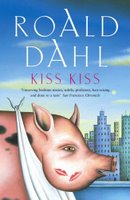I have attended Breast Clinics in the past, and experienced high levels of emotion and worry by patients presenting with a lump. This is a stark contrast to the hardened patients who come to the oncology clinic for treatment of recurrence, taking it all in their stride, almost emotionless and matter-of-fact about their disease.
Feeling a patient's lump, and realising what I was touching - and what it represented - made me consider a woman's relationship with her lump. Personally, I'd want rid of the mass as soon as possible (which explains why many patients go privately to have earlier surgery). But patients with a large tumour have neo-adjuvant chemotherapy to shrink their tumour down to an operable size, and thus live with the lump for some weeks before it is removed. This must give them some form of psychological acceptance of their cancer - possibly explaining later matter-of-fact attitudes.
However, given how disfiguring the results of lumpectomy, wide local excision or mastectomy can be, it is no wonder that these women adopt such a stoic attitude to their cancer. Thankfully there is an incredibly extensive support network for breast cancer - if anything, perhaps over-representing the disease somewhat in terms of mortality (although one in ten women will get breast cancer in their lifetime).
Jo Spence documented her breast cancer experience, and here is her picture of her undergoing mammography, and her feelings about it:

"Passing through the hands of the medical orthodoxy can be terrifying when you have breast cancer. I determined to document for myself what was happening to me. Not to be merely the object of their medical discourse but to be the active subject of my own invesitgation. Here whilst a mammogram is being done I have persuaded the radiographer to take a picture for me. She was rather unhappy about it, but felt it was preferable to my holding the camera out at arm's length and doing a self portrait."
Readers can see a review of 'Ruth Picardie's Before I Say Goodbye', which documents her diagnosis and eventual death from metastatic breast cancer from the medhum.blogspot.com archives.











 expressed and disinibition in confessing life's intimate details to a blind face.
expressed and disinibition in confessing life's intimate details to a blind face.





